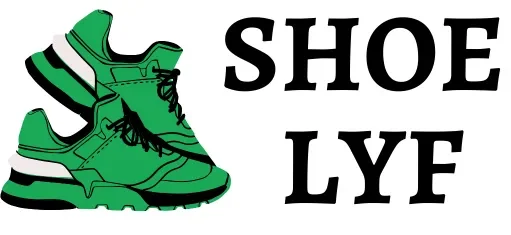When it comes to iconic shoe styles, few are as recognizable as Converse’s classic Chuck Taylor All Stars. These simple canvas sneakers have been a fashion staple for decades, adorning the feet of rockers, athletes, artists, and everyone in between. But are they actually any good if you have flat feet?
That’s a question a lot of people with flat feet or fallen arches find themselves asking. After all, while Converse sneakers look super cool, their minimalist construction doesn’t exactly scream “arch support” or “foot-cradling comfort.” If you’ve ever slipped on a pair for more than just kicking around, you know the feeling – it can be like walking on a flat rubber mat.
So are Converse totally off-limits for the flat-footed among us? Or can you still indulge in that iconic style if you take some precautions? Let’s dig into what makes Converse potentially problematic for flat feet in the first place, but also look at some tips and strategies that may make them a viable option after all.
Why Flat Feet Can Struggle with Converse
To understand why Converse doesn’t play so nicely with flat feet out of the box, you have to consider their classic design and construction:
- Flat, flexible rubber outsole with the iconic diamond tread pattern
- No built-in arch support, contours, or motion control features
- Thin cushioning in the insole and midsole
- Stitched canvas upper with no reinforcement or structure
Contrast this to a good motion control shoe designed for flat feet, which typically has:
- A thick, rigid midsole with arch support and deep heel cup
- Enhanced cushioning and shock absorption
- Structured heel counter to control rearfoot motion
- Firm yet flexible outsole for stability
- Roomy toe box to allow feet to splay out
Basically, Converse are about as minimalist as shoes get. There’s no arch support, deep cushioning, or motion control to speak of. For people with healthy, normal arches, this may not be a huge deal for casual wear. But if you have very flat, rigid feet with poor shock absorption, that lack of support and structure can quickly lead to foot fatigue and discomfort.
When you have little to no arches, your feet are unable to disperse impact forces efficiently as you walk or run. All that forces gets directed into the muscles, tendons, and other soft tissues of your feet and lower legs. This can cause excessive inward rolling of the feet (overpronation) along with general aches, pains, and hot spots.
So while Converse may look super stylish, for flat feet they can result in:
- Increased strain on your feet, ankles, and lower legs
- Arch pain and plantar fasciitis flare ups
- Heel pain and Achilles tendinitis
- Ankle rolling and instability
- General foot fatigue and soreness
Not exactly ideal if you plan on being on your feet for more than an hour or two at a time. Even just wearing Converse casually while running errands or being a tourist can take its toll after awhile.
How to Potentially Make Converse Work for Flat Feet
Now that we understand the challenges, let’s look at some tips and strategies that may make it possible to wear Converse if you have flat feet:
Pay Attention to the Sizing
One of the biggest mistakes is wearing Converse too small or too big. Either can spell disaster for flat feet by causing rubbing, crowding of the toes, heels slipping, and other fit issues that amplify strain.
Converse actually tends to fit a bit smaller than other sneakers. Most flat-footed folks have better luck sizing up a half or full size from their normal shoe size to allow enough wiggle room, especially in the toe box. Always try them on and take some walks around the store first.
Add Some Aftermarket Arch Support
Just because Converse lacks arch support out of the box doesn’t mean you can’t add your own. An affordable insole like Superfeet or Powerstep can provide structured arch support and redirect weight off sore spots. Or look for insoles specifically designed for flat feet.
You’ll likely have to go with a low-profile model since Converse don’t have very deep footbeds to work with. But just adding a moderately supportive insole can make a huge difference in comfort for flat arches.
Stick to Low-Top Models
One benefit of Converse is that the main Chuck Taylor line comes in both low and high-top models. For flat feet, the low-tops are generally preferable as the slimmer ankle collar reduces the risk of rubbing and allows for more natural ankle flexion while walking.
High-tops can sometimes feel too constricting or put pressure on already-irritated areas for flat-footed folks. Low-top Chucks give you more freedom of movement.
Try the Lunarlon or Crafted Lines
While Converse is best known for their canvas Chuck Taylors, they’ve expanded over the years into different styles and materials incorporating newer shoe technologies. Two that can be interesting options for flat feet are their Lunarlon and Crafted lines.
Converse Lunarlon sneakers use a soft polyurethane midsole from Nike for better cushioning and energy return compared to the standard rubber soles. The Crafted line incorporates a slightly contoured footbed with more arch support in a lightweight chambray canvas upper.
These are still lifestyle shoes without true orthotic support. But the updates give a bit more comfort and padding for flat feet compared to the original 1917 Chuck Taylor design.
Alternate With More Supportive Shoes
Unless you have extremely rigid feet with serious overpronation issues, most flat feet should be able to wear Converse in moderation. The key is not wearing them for extended periods of standing or walking right off the bat.
Instead, start slow by wearing them for just an hour or two at a time. Then switch to more supportive, orthotic-friendly shoes. This can give your arches a break and prevent excessive overpronation, pain, and fatigue.
Converse can also often work better as just casual sneakers for light activity. Wear them while running errands, going out to eat, or lounging around the house. But avoid wearing them for intense workouts, long days at a theme park, or other scenarios where you’ll be pounding the pavement for hours on end.
Look Into Arch Support Socks
A clever hack some flat-footed Converse wearers use is compression or arch support socks. These have built-in quilted or ribbed support bands that gently lift and cradle your arches from underneath.
While subtle, these socks can provide just enough medial support and shock absorption for low arches to make Chucks tolerable for longer periods. Just don’t mistake them for a full-on orthotic or expect major relief from severe overpronation.
When Flat Feet Should Pass on Converse
While those tips can help many flat-footed individuals wear Converse comfortably in shorter stretches, there are some situations where it’s probably best to pass on the Chuck Taylors altogether:
- You have extremely rigid flat feet with severe overpronation or fallen arches
- You’ve had recent foot surgery or are recovering from injuries like plantar fasciitis
- You spend a lot of time on your feet all day for work
- You have muscular or structural issues causing severe foot pain or fatigue
In these cases, opt for dedicated orthotic shoes with maximum arch support, deep cushioning, and motion control features. Converse simply won’t provide enough support and protection, even with insoles or other hacks.
It’s also worth noting that flat-footed kids are often better off avoiding Converse during their developing years. Their flat arches need the structured support of a good motion control shoe until their growing bones and tendons have matured and developed more of an arch.
At the end of the day, listening to your body is key. If Converse cause significant pain, swelling, or fatigue after just a short period of wear, it’s a sign they simply aren’t a good match for your particular flat feet.
Don’t force it – instead of risking injury, save your Chucks for very short casual wear and stick to quality orthotic shoes for most of your daily activities.
The Verdict on Flat Feet and Converse
So to answer that initial question – can you wear Converse if you have flat feet? The answer is…it depends.
For those with more mild, flexible flat arches and no major pain issues, it is possible to make Converse work for casual, light wear periods. Just be sure to get the sizing right, add some arch support insoles, and take frequent breaks to rest your feet.
But if your flat feet are extremely rigid with severe overpronation, or you experience significant pain and fatigue, then Converse likely won’t provide the support and motion control needed. You’ll want to stick to proper orthotic sneakers and reserve the Chucks for very occasional, brief periods of wear.
In moderation and with the right fit and insoles, Converse can be an option for some flat feet. But temper your style expectations if it means risking discomfort or injury down the road. Your feet will thank you!
Related FAQs
Do flat feet need arch support?
Yes, most flat feet lack the natural arch support and shock absorption that normal arches provide. Quality arch support insoles or supportive shoes can help distribute weight evenly and prevent overpronation.
How can you tell if you have flat feet?
Look for very low arches that seem collapsed inward, excessive pronation when walking, and imprints showing almost the entire foot when you step on a surface. You may also experience foot pain and fatigue.
Is it OK to walk around barefoot with flat feet?
For most flat feet, it’s better to keep shoes on except at home. Bare feet put more strain on already-compromised arches. Shoes with arch support can help minimize overpronation and pain.
What kind of shoes are best for flat feet?
Look for motion control shoes with firm yet flexible midsoles, contoured arch support, and features to prevent overpronation. Brooks, New Balance, and Orthaheel are some top flat feet shoe brands.
Will supportive shoes help develop arches in flat feet?
Proper supportive shoes can reduce strain and discomfort in flat feet. However, they cannot actually reshape or “raise” adult flat arches that are congenitally flat or fallen from age/injury.

